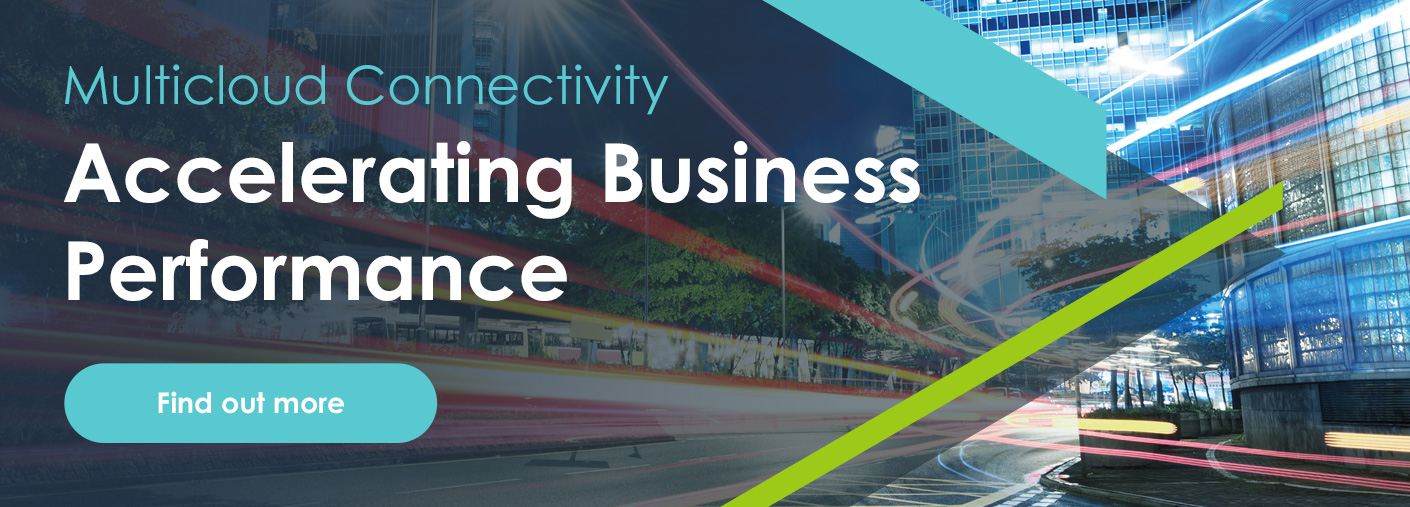Part 3: 3 Advantages SASE Brings to your Multicloud Access Strategy
By Paul Bulmer, Director of Product
Home | News & Events | Blogs

July 2022
By: Paul Bulmer, Director of Product
Removing Complexity in an Evolving Multicloud Environment
With the need to balance security, privacy, and productivity in an environment made up of multiple cloud-based apps and services, it may be time to consider a SASE architecture.
If you’re reading this article, it’s likely because you have a material portion of your workforce needing to access the corporate environment remotely. On average, nearly 70% of employees are working remotely (or have done so at some point) during the pandemic, making the need to connect them to the internal and cloud-based resources they need imperative.
With businesses today looking beyond the simple need for connectivity, the answer needs to have some semblance of improving access, user performance, and security. Most businesses (93%) connect the remote parts of their workforce to the corporate environment via a virtual private network (VPN). But the answer to a businesses’ need to reach those desired levels of accessibility and performance while improving their cybersecurity stance isn’t found in a simple connectivity technology that is decades old.
In this third blog in a 5-part series on removing complexity in an evolving multicloud environment, we’re going to take a look at why you may want to ditch legacy connectivity methods – such as a VPN – in favour of modern connectivity architectures, such as a Secure Access Service Edge (SASE).
SASE pushes your security requirements to the edge of your network, effectively creating a bubble with all of your sites, home workers and cloud platforms inside and secured from the edge. This removes the requirement for VPN’s and the traditional central breakout.
1. The Connection is Actually Secure
VPNs do leverage encryption to secure the communications across them, but they should be seen as a privacy solution and not a security solution. The reason? The don’t improve the security of your environment; only the communications channel itself. A threat actor can take advantage of an established VPN connection – all without the business knowing. Conversely, SASE employs layers of security that scrutinise the connect request, the user making the request, the device being used, the resource to be accessed, and in some cases, the ongoing activity – all to ensure that when the connection is made, it’s truly the sanctioned employee that is making the request and utilising the access.
2. User Performance is Improved
Ensuring the security of your network is of utmost importance. But all those security checks can add to latency and result in slow performance. SASE helps to optimise the performance of your remote users by carrying out all security checks and policy enforcement in one motion, by allowing remote users to connect directly and securely to the cloud based resource it reduces the number of hops required and by extension reducing latency and increasing user experience. Also, by enabling users to connect directly to resource in the cloud there’s less demand on the central internet breakout required with a traditional VPN.
3. The Business is Enabled
Unlike VPN, SASE actually helps the business achieve its goals around security and scalability. SASE enforces the same policy-based secure access, regardless of where users, devices, applications, workloads, or data reside. And using a cloud-delivered approach, SASE helps the business scale its cloud and digital transformation objectives without the concern that the SASE solution itself adds to the complexity of your multicloud environment while simplifying the access to a growing number of cloud-based workloads, applications, and resources.
Gaining the Cloud Advantage with SASE
The legacy method of using a VPN to connect remote users to a complex mix of internal and cloud-based resources no longer meets the changing needs of an evolving business. What’s needed is an architecture that enhances the desired security to keep the overall environment safe from inappropriate access, while simultaneously increasing the accessibility to it by a remote workforce.
Click here to learn more about Multicloud Connectivity.
Find out more
Want to know more about how Maintel’s cloud first approach can bring your business closer to your customers? Just fill out the form or call us at
0344 871 1122 (local rate).
© 2024 Maintel
We use cookies on our website to give you the most relevant experience by remembering your preferences and repeat visits. By clicking “Accept All”, you consent to the use of ALL the cookies. However, you may visit "Cookie Settings" to provide a controlled consent.
Manage consent
Privacy Overview
This website uses cookies to improve your experience while you navigate through the website. Out of these, the cookies that are categorized as necessary are stored on your browser as they are essential for the working of basic functionalities of the website. We also use third-party cookies that help us analyze and understand how you use this website. These cookies will be stored in your browser only with your consent. You also have the option to opt-out of these cookies. But opting out of some of these cookies may affect your browsing experience.
Necessary cookies are absolutely essential for the website to function properly. These cookies ensure basic functionalities and security features of the website, anonymously.
| Cookie | Duration | Description |
|---|---|---|
| cookielawinfo-checkbox-analytics | 11 months | This cookie is set by GDPR Cookie Consent plugin. The cookie is used to store the user consent for the cookies in the category "Analytics". |
| cookielawinfo-checkbox-functional | 11 months | The cookie is set by GDPR cookie consent to record the user consent for the cookies in the category "Functional". |
| cookielawinfo-checkbox-necessary | 11 months | This cookie is set by GDPR Cookie Consent plugin. The cookies is used to store the user consent for the cookies in the category "Necessary". |
| cookielawinfo-checkbox-others | 11 months | This cookie is set by GDPR Cookie Consent plugin. The cookie is used to store the user consent for the cookies in the category "Other. |
| cookielawinfo-checkbox-performance | 11 months | This cookie is set by GDPR Cookie Consent plugin. The cookie is used to store the user consent for the cookies in the category "Performance". |
| viewed_cookie_policy | 11 months | The cookie is set by the GDPR Cookie Consent plugin and is used to store whether or not user has consented to the use of cookies. It does not store any personal data. |
Functional cookies help to perform certain functionalities like sharing the content of the website on social media platforms, collect feedbacks, and other third-party features.
Performance cookies are used to understand and analyze the key performance indexes of the website which helps in delivering a better user experience for the visitors.
Analytical cookies are used to understand how visitors interact with the website. These cookies help provide information on metrics the number of visitors, bounce rate, traffic source, etc.
Advertisement cookies are used to provide visitors with relevant ads and marketing campaigns. These cookies track visitors across websites and collect information to provide customized ads.
Other uncategorized cookies are those that are being analyzed and have not been classified into a category as yet.


